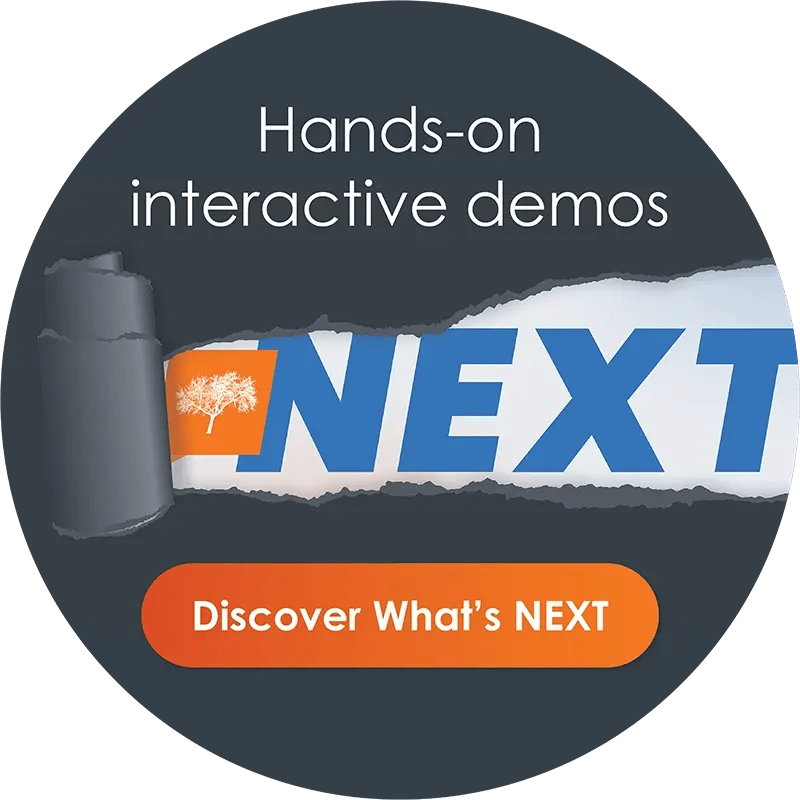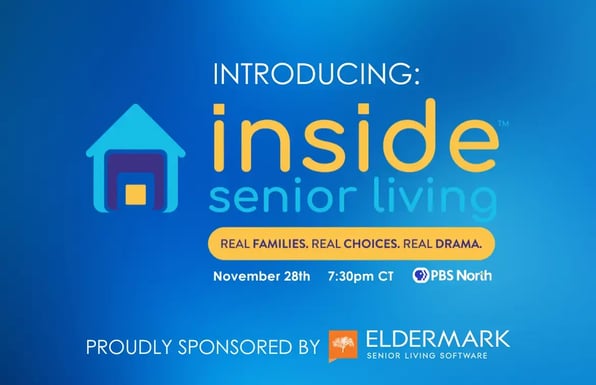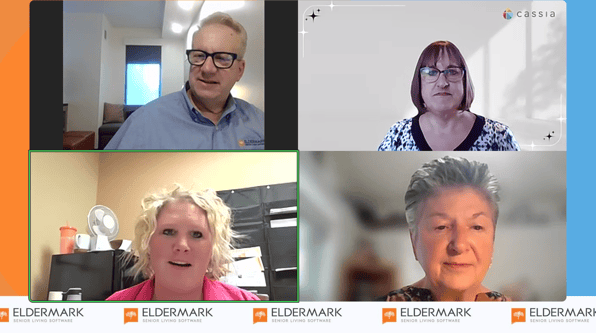How to Take a Proactive Approach to Senior Care | Examples & Tools

We hear a lot about preventative care these days, and while disease prevention is crucial, it still leans heavily into the “what if?” of healthcare. Today’s providers are talking more and more about proactive healthcare, particularly when it comes to older adults.
Proactive care is an action-oriented approach that prioritizes what seniors and caregivers can do right now to reduce risk, manage chronic conditions, and improve overall quality of life. Below, we’ll take a look at how proactive care can manifest in your senior living community, and the tools and tips you need to implement it.
What Does Proactive Senior Care Look Like?
Senior living operators know their teams work tirelessly to create a safe, healthy, and engaging environment for residents. However, with limited budgets and staff shortages, many senior living employees and caregivers operate with a reactive mindset. This approach to care waits for something to go wrong before action is taken, and it can be detrimental to the overall health and well-being of the residents.
Fortunately, there are ways to incorporate a proactive care approach without breaking the budget or stressing your employees. But if you haven’t been in a community that practices proactive care, you might wonder what it looks like. Here are some examples:
Early Intervention and Prevention
Proactive care doesn't replace preventative care. Instead, it builds on it as a best practice by catching life-threatening conditions early and identifying potential risks for injuries and accidents. Proactive care uses data and personal information to identify residents who may need intervention to prevent illnesses or injuries. It also ensures that residents are kept out of risky environments or situations.
Example: Research shows that patients within a certain demographic are more prone to developing pre-diabetes and eventually becoming diabetic. A senior living community can use resident data to identify older adults that fit that particular risk profile and then develop a plan of action — including diet, activity, and health assessments — to reduce that risk.
Personalized Care Plans
When it comes to serving older people in your senior living community, there is no one-size-fits-all approach. That’s because in any long-term care community or senior residence, every individual comes with their own medical history, their own unique dietary needs, emotional needs, and personal preferences. Tailoring a personalized care plan is the best way to ensure residents stay healthy and well while increasing satisfaction and engagement.
Example: Residents all have different diets they follow for their own reasons, whether it’s to benefit their health or to align with their culture or lifestyle. Personalized care plans can include dining options that appeal to their dietary or nutritional needs. For instance, your community may offer a separate menu for those on a low-carbohydrate diet. To further personalize, you can provide a menu that aligns with their EHR and eMAR so you know the meals provided are compatible with their individual health conditions and medications.
Regular Health Assessments
You play an integral role in the health of your senior residents, even if you aren’t an assisted living community or nursing home. You can work to create easier access to ongoing health checks and assessments, which will identify risk factors and encourage early detection of some chronic diseases and illnesses.
Example: You can work with local healthcare providers to offer routine health screenings in your community that are relevant to older adults. For instance, this may include a quick heart check, a blood pressure screening, or free blood sugar tests. Any abnormalities will be detected, and you can then work to refer residents to the appropriate care provider for further testing.
Engagement and Wellness Programs
Proactive care goes far beyond medical care or physical well-being. It also means caring for residents’ mental, social, and emotional wellness in a way that is actionable and engaging. According to the National Council on Aging, up to 25% of older adults deal with mental health struggles, but many more go undiagnosed. Regular mental health screening is an important step in proactively addressing the psychological wellness of your residents.
Example: Polls and surveys can help you identify which residents are feeling lonely or isolated, and deal with the issue before it becomes a major concern. You can leverage the data in your community to determine which activities would be most engaging for residents, monitor attendance, and seek out feedback to improve engagement.
The Role of Technology in Proactive Senior Care
Technology is revolutionizing the way we approach senior care, particularly in the realm of proactive care. New software and digital solutions can be used in a variety of ways to help you make informed decisions that support your residents’ well-being. Some possible use cases for senior living technology include:
- Wearable technology: This can help monitor basic vitals like heart rate, or help you collect data on sleep, stress, fall risks, and more.
- Digital menu planning: Senior dining software can help you create rotating menus that can be customized to the diets and preferences of all residents, while ensuring compatibility with any medical conditions and medications.
- Family portal: A family portal is a digital doorway through which residents can interact with family members and loved ones. Family members would have the ability to help select meals, browse activities, and connect with residents.
- Activities coordination: An activity planning platform will help activities and engagement directors create a schedule that is robust and appealing to many residents. They can also poll residents and seek out feedback to make adjustments and increase engagement.
- EHR/eMAR: These are, of course, fundamental to senior living communities, and provide all the relevant health and medical information you need to make informed choices for your residents. You want to choose an EHR/eMAR platform that will integrate with other technology used in your community, so you can reduce errors and ensure accuracy.
Eldermark NEXT: A Step Toward Proactive Care
The downside to the technological solutions listed above is that many of them come as different, standalone platforms that require contracts and relationships with individual vendors. This can be a costly endeavor, and it increases the risk for mistakes and inaccuracies.
That’s why Eldermark NEXT has changed the landscape of senior living. This all-in-one, end-to-end solution is comprehensive, proactive, and efficient. You can customize Eldermark NEXT with the solutions your community needs, and be assured that every function will integrate seamlessly. Here’s how a consolidated platform like Eldermark NEXT can advance proactive care in your senior community:
- Save time in administrative tasks so employees can focus on individualized care.
- Increase revenue with billing solutions that put money back into other business areas.
- Schedule employees and staff by acuity so you know every need is covered, every shift.
- Sync with EHR and eMAR to ensure residents’ lifestyles, diets, and activities align with their health needs.
- Boost activity attendance and increase engagement, connection, and satisfaction for residents and loved ones.
- Manage CRM easily and comprehensively across functions, so information is always accurate.
- Compile data for predictive analytics and make educated decisions about resident care.
How to Get Started With Eldermark NEXT
Eldermark NEXT does a lot, but it takes very little to get started. Our easy onboarding ensures a seamless transition from previous vendors, and our comprehensive solution means less training and more proactive planning for staff. Find out how Eldermark NEXT can change the game for your senior living community — schedule a free demo today!




